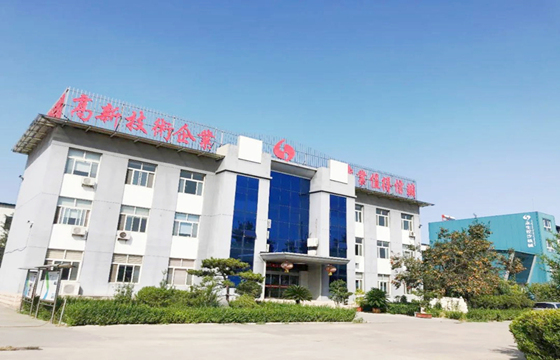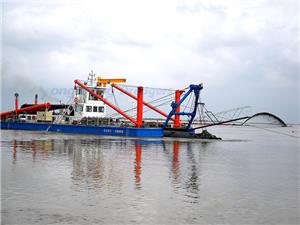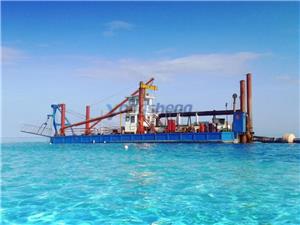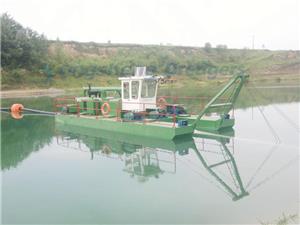Winter Maintenance Knowledge for Dredgers
Winter Maintenance Knowledge for Dredgers
1. Before starting, check the transmission system and oil of the entire machine, then start the diesel engine pulling the conveyor belt at the back, pull the clutch, start the diesel engine, slowly loosen the clutch, and adjust the speed to normal. Then start the diesel engine pulling the zipper bucket in front.
2. After the diesel engine starts, adjust the speed to the required speed. Then release the brake of the boom. Slowly lower it, and when the sand in the hopper is more than 2/3, you can stop lowering it, and wait until 1/3 to help lower the boom. When the boom is at a 45-degree angle with the water surface, the boom should be stopped. At this time, the amount of sand in the hopper is changed to traction control.
3. When the dredger moves forward, it depends on the amount of sand in the bucket. It should be flexible to move forward and backward. If the sand layer collapses and the machine is struggling or cannot be pulled, the traction rope should be loosened to make the boat move backward until it is dug. If there are large rocks or mud layers underwater, the hull will vibrate violently. At this time, the dredging arm should be lifted immediately to avoid obstacles before proceeding.
4. The water pressure and water volume of the bearing should meet the requirements. The tightness of the packing should be adjusted (or replaced) at any time to avoid leakage of the shaft seal. And replace the shaft deep well pump sleeve of the IH chemical pump in time.
5. When replacing the bearing, it is necessary to ensure that there is no dust in the bearing assembly and the lubricating oil is clean. The bearing temperature during pump operation is generally not more than 60-650C, not more than 750C.
6. Ensure the coaxiality of the motor and the pump, ensure that the elastic pad in the coupling is complete and correct, and replace it in time after damage.
7. Ensure that the pump assembly and piping system are installed correctly, firmly and reliably.
8. Some parts of the slurry pump are vulnerable parts. In daily use, pay attention to the loss of vulnerable parts and repair or replace them in time. During the repair or replacement of vulnerable parts of the slurry pump, ensure that the assembly is correct and the clearance is adjusted reasonably to avoid the occurrence of tight friction.
9. The suction pipe system of the slurry pump must be leak-free, and attention should be paid to whether the suction port is blocked during operation. The medium that the slurry pump needs to handle mostly contains solid particles, so the grille placed in the pump inlet pool should meet the requirements of the particles that the slurry pump can pass, reducing the possibility of large particles or long fiber materials entering the pump body and causing blockage.





